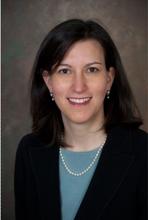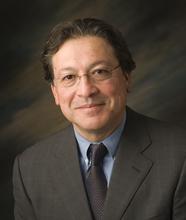The Engineering Laboratory at NIST, Gaithersburg will be hosting the 5th annual (and third virtual) symposium featuring the 2018 NIST and 2020 NIST/NSF Disaster Resilience Grant Research Program awardees.
Researchers will convene to share insights and findings based on the research topics funded under the program. The Disaster Resilience Research Grants support advancement in U.S. disaster resilience, including research on Disaster and Failure Studies, National Earthquake Hazards Reduction Program, Wind Impact Reduction, and Reduced Ignition of Building Components in Wildland-Urban Interface (WUI) Fires Project, community recovery, infrastructure resilience, and other related topics. The symposium will be held over 2 days in a virtual setting with each recipient presenting their work and answering questions about their research and related topics.
keynote speakers

Dr. Rachel Davidson, Professor and Associate Dean for Academic Affairs, University of Delaware
Title: Infrastructure system resilience: A big picture perspective
Bio: Rachel Davidson is a Professor in the Department of Civil and Environmental Engineering, a core faculty member in the Disaster Research Center, and Associate Dean for Academic Affairs and Chief Diversity Advocate in the College of Engineering at the University of Delaware. She conducts research on natural disaster risk modeling and civil infrastructure systems. It focuses particularly on lifelines (e.g., electric power, water supply) and risk from a regional perspective; on earthquakes and hurricanes. She is a Fellow and Past-President of the Society for Risk Analysis, recipient of the 2019 ASCE Charles Martin Duke Lifeline Earthquake Engineering award, and a Fellow of the Executive Leadership in Academic Technology and Engineering (ELATE) program.

Dr.Julio A.Ramirez, Dist. M. ASCE Karl Kettelhut Professor in Civil Engineering and NHERI NCO Center Director Lyles School of Civil Engineering, Purdue University
Title: The Natural Hazards Engineering Research Infrastructure (NHERI) Coordinated Research Agenda- Mitigating the Impact of Natural Hazards on Communities
Bio: Dr. Julio A. Ramirez is a Professor of structural engineering in the Lyles School of Civil Engineering of Purdue University. He is the Principal Investigator and Center Director of the Network Coordination Office (NCO) of the NSF funded Natural Hazards Engineering Research Infrastructure (NHERI).
Dr. Ramirez is a voting member of the technical Joint Committee ACIm ASCE 445, Shear and Torsion; and ACIm ASCE Committee 408, Bond and Development of Reinforcement. He served as the chief officer for the George E. Brown Jr. Network for Earthquake Engineering Simulation (NEES) during the period of October 2009 to September 2015. He was an Associate Editor for the Committee on Concrete and Masonry Structures (CCMS) Division of the American Society of Civil Engineers (ASCE) Structural Journal and has been a member of several National Cooperative Highway Research Program (NCHRP) research panels. Prof. Ramirez has served in NSF proposal review panels for several directorates. Dr. Ramirez is a Fellow of the American Concrete Institute and the recipient of the 2000 Delmar Bloem Award and the 2006 Joe W. Kelly Award of the American Concrete Institute.
For the past 30 years Prof. Ramirez has been teaching and conducting research in structural engineering. His areas of expertise cover design and evaluation of performance as well as code development of reinforced and prestressed concrete bridges and buildings. Since 1994, Prof. Ramirez has been involved in eight reconnaissance missions following the earthquakes of Northridge CA, Manzanillo Mexico, Kobe Japan, Duzcem Bolu Turkey, Puebla Mexico, Armenia Colombia, and Bingol Turkey. The goal of these missions was to gather perishable data on the performance of reinforced and prestressed concrete bridges and buildings immediately following major earthquakes in what constitutes a major real life and very costly test of the built environment in order to synthesize lessons that could help mitigate the impact of earthquakes on society. He was also engaged as project
Co-PI in the NSF funded study “Mitigation of Collapse Risk in Vulnerable Concrete Buildings” aimed at identifying collapse triggers in nonm ductile reinforced concrete buildings subjected to seismic actions. His research work in the area of bond of mild reinforcement and prestressing strand in highm strength concrete has been widely referenced and serves as the basis for the extension of the AASHTO LRFD Specifications on development of mild reinforcement and prestressing strand to higher strength concretes.
agenda
View/Download (PDF)

